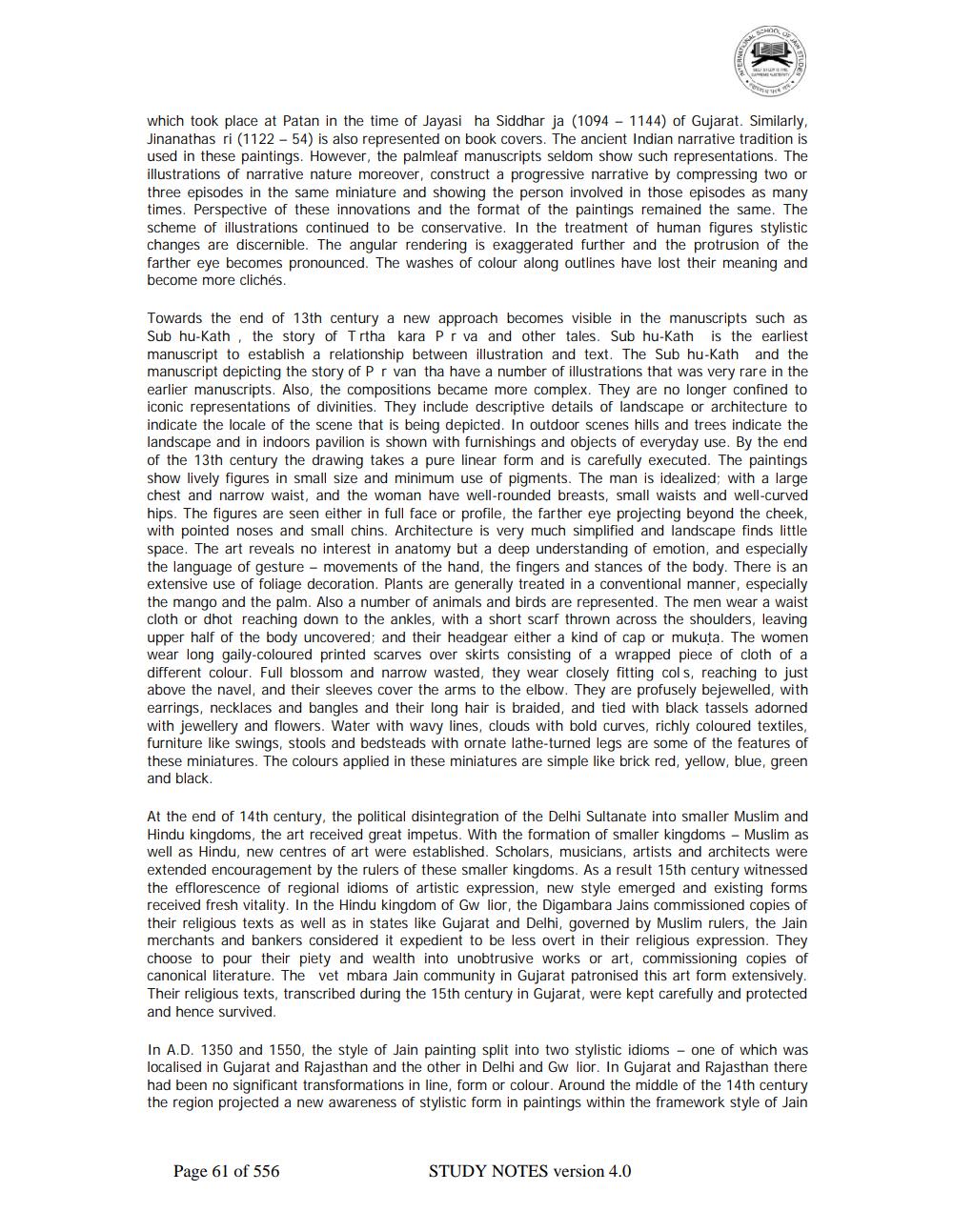________________
which took place at Patan in the time of Jayasi ha Siddhar ja (1094 - 1144) of Gujarat. Similarly, Jinanathas ri (1122 - 54) is also represented on book covers. The ancient Indian narrative tradition is used in these paintings. However, the palmleaf manuscripts seldom show such representations. The illustrations of narrative nature moreover, construct a progressive narrative by compressing two or three episodes in the same miniature and showing the person involved in those episodes as many times. Perspective of these innovations and the format of the paintings remained the same. The scheme of illustrations continued to be conservative. In the treatment of human figures stylistic changes are discernible. The angular rendering is exaggerated further and the protrusion of the farther eye becomes pronounced. The washes of colour along outlines have lost their meaning and become more clichés.
Towards the end of 13th century a new approach becomes visible in the manuscripts such as Sub hu-Kath, the story of Trtha kara Prva and other tales. Sub hu-Kath is the earliest manuscript to establish a relationship between illustration and text. The Sub hu-Kath and the manuscript depicting the story of P r van tha have a number of illustrations that was very rare in the earlier manuscripts. Also, the compositions became more complex. They are no longer confined to iconic representations of divinities. They include descriptive details of landscape or architecture to indicate the locale of the scene that is being depicted. In outdoor scenes hills and trees indicate the landscape and in indoors pavilion is shown with furnishings and objects of everyday use. By the end of the 13th century the drawing takes a pure linear form and is carefully executed. The paintings show lively figures in small size and minimum use of pigments. The man is idealized; with a large chest and narrow waist, and the woman have well-rounded breasts, small waists and well-curved hips. The figures are seen either in full face or profile, the farther eye projecting beyond the cheek, with pointed noses and small chins. Architecture is very much simplified and landscape finds little space. The art reveals no interest in anatomy but a deep understanding of emotion, and especially the language of gesture - movements of the hand, the fingers and stances of the body. There is an extensive use of foliage decoration. Plants are generally treated in a conventional manner, especially the mango and the palm. Also a number of animals and birds are represented. The men wear a waist cloth or dhot reaching down to the ankles, with a short scarf thrown across the shoulders, leaving upper half of the body uncovered; and their headgear either a kind of cap or mukuta. The women wear long gaily-coloured printed scarves over skirts consisting of a wrapped piece of cloth of a different colour. Full blossom and narrow wasted, they wear closely fitting cols, reaching to just above the navel, and their sleeves cover the arms to the elbow. They are profusely bejewelled, with earrings, necklaces and bangles and their long hair is braided, and tied with black tassels adorned with jewellery and flowers. Water with wavy lines, clouds with bold curves, richly coloured textiles, furniture like swings, stools and bedsteads with ornate lathe-turned legs are some of the features of these miniatures. The colours applied in these miniatures are simple like brick red, yellow, blue, green and black
At the end of 14th century, the political disintegration of the Delhi Sultanate into smaller Muslim and Hindu kingdoms, the art received great impetus. With the formation of smaller kingdoms - Muslim as well as Hindu, new centres of art were established. Scholars, musicians, artists and architects were extended encouragement by the rulers of these smaller kingdoms. As a result 15th century witnessed the efflorescence of regional idioms of artistic expression, new style emerged and existing forms received fresh vitality. In the Hindu kingdom of Gw lior, the Digambara Jains commissioned copies of their religious texts as well as in states like Gujarat and Delhi, governed by Muslim rulers, the Jain merchants and bankers considered it expedient to be less overt in their religious expression. They choose to pour their piety and wealth into unobtrusive works or art, commissioning copies of canonical literature. The vet mbara Jain community in Gujarat patronised this art form extensively. Their religious texts, transcribed during the 15th century in Gujarat, were kept carefully and protected and hence survived.
In A.D. 1350 and 1550, the style of Jain painting split into two stylistic idioms - one of which was localised in Gujarat and Rajasthan and the other in Delhi and Gw lior. In Gujarat and Rajasthan there had been no significant transformations in line, form or colour. Around the middle of the 14th century the region projected a new awareness of stylistic form in paintings within the framework style of Jain
Page 61 of 556
STUDY NOTES version 4.0




